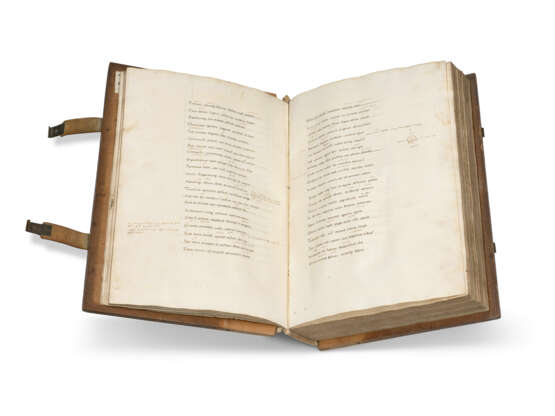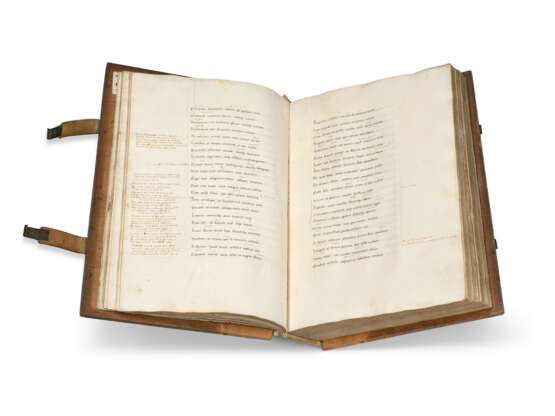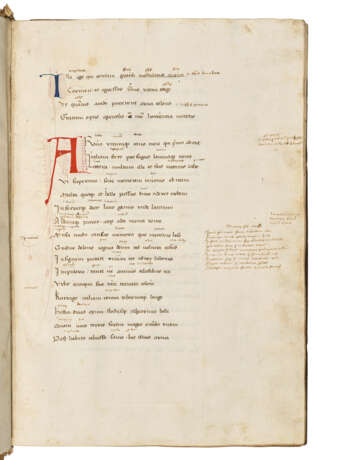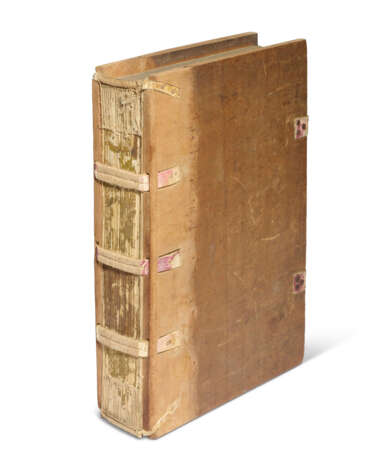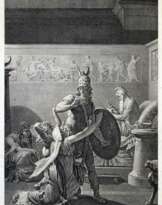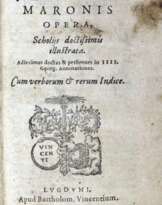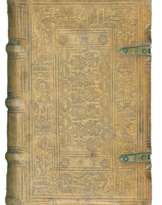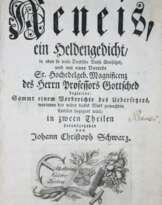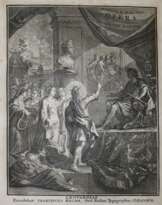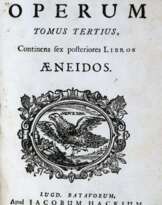ID 1349777
Lot 9 | Virgil (70-19 BC)
Valeur estimée
£ 60 000 – 90 000
The Gladstone Aeneid, in Latin, decorated manuscript on paper [Italy, first half 15th century]
‘Arms, and the Man I sing’: a fine humanist copy of The Aeneid, one of the greatest epic poems of all time and a foundational text of Western literature.
303 x 210mm. vi + 238 + i: 1-2310, 248, 21 lines, ruled space: 210 x 105mm, outer bifolia of gatherings reinforced, penwork initials alternately blue and red with penwork flourishing in red throughout, occasional marginal maniculae, T-O map drawn in the margin of f.10, early annotations throughout (some marginal thumbing, small marginal repair at f.145v, overall in excellent condition with clean, wide margins). Contemporary wooden boards, red leather straps with brass clasps and catches (original leather removed from spine). Fitted blue morocco case.
Provenance:
(1) The watermark matches Piccard 16, Abtlg. 2, Nr. 175, which is localisable to Udine, 1421. Script, near-contemporary annotations and binding form a matching pair with the Gladstone Metamorphoses: evidently the original owner had commissioned these two cornerstone texts of classical literature from the same manuscript scriptorium.
(2) William Ewart Gladstone, Prime Minister (1809-1898): Hawarden Castle library label, MM II 2.
Content: The Aeneid, each book preceded by the pseudo-Virgilian argumenta or pre-poems, ff.1-237: Book I f.1; Book II f.19; Book III f.37; Book IV f.54v; Book V f.71v; Book VI f.92v; Book VII f.113v; Book VIII f.133; Book IX f.151; Book X f.170v; Book XI f.192v; Book XII f.214v; blank f.238.
The supreme quality of Virgil's poetry was recognised in his lifetime, and he continued to be read and revered throughout the Middle Ages. In part this was because of the Christian interpretation given to some aspects of his work, or because his portrayal of empire-building resonated with contemporary political and military events, but the technical perfection and sustained beauty of his verse was always acknowledged: while Dante cast Virgil as a prophet of Christianity who guided the way to the Gates of Paradise, he also described him as 'il nostro maggior poeta'. He was read by Gregory of Tours and St Augustine, who confessed he had wept at reading about the death of Dido. He was imitated and translated, by Spenser, Dryden, Milton and a multitude of other Renaissance and early Modern authors. With the early Renaissance interest in classical literature and the acceptance of the Aeneid as a national epic, there was an increase in the number of Virgil manuscripts produced in Italy. Today, the Aeneid survives in over 1,000 medieval and Renaissance manuscripts, and yet according to Rare Book Hub, only 5 complete manuscript copies have appeared at auction in the past 50 years.
This manuscript opens with ‘Ille ego qui condam gracili modulates avena’, which precedes the famous opening of Book I ‘Arma virumque cano’. Commentators have, in the past, attributed this first opening to Virgil – and indeed it appears in some medieval and Renaissance copies of the text – but its authorship has been hotly contested by modern scholars: a seminal 1968 article by Professor R.G. Austin stating that ‘the authenticity of the ille ego lines fails on every count’ was soon countered by P.A. Hansen, who argued that they were in fact written by Virgil (R.G. Austen, ‘Ille Ego Qui Quondam…’, The Classical Quarterly, 18, no 1 [May, 1968], pp.107-115; P.A. Hansen, ‘Ille Ego Qui Quondam… Once Again’, The Classical Quarterly, 22, no 1 [May, 1972], pp.139-149). The disputed lines are not found in any early manuscript of Virgil and the Aeneid itself was known in Roman times by its famous opening lines ‘Arma virumque cano’ (quoted by Ovid and appearing as graffiti on the walls of Pompeii). The lines appear for the first time in the Life of Virgil by the 4th-century grammarian Donatus, who comments that Varius, one of the executors of Virgil’s will, deleted them from the main text of the Aeneid. The general consensus today is that they are prefatory epigrams steeped in the Theocritean tradition that bring together the three major works of Virgil (the Aeneid, the Eclogues, and the Georgics) – but not written by Virgil himself. Each book of the Aeneid in the present manuscript begins with its pseudo-Virgilian introduction, which is visually distinguished from the authorial text by a red or blue initial.
A schematic T-O map has been drawn in the margins by an early hand, visually annotating the following passage: ‘Europa atque Asia pulsus’. Continents – ‘Asia’, ‘Europa’ and ‘Affrica’ – are labelled within, and cardinal directions in Latin are provided on the periphery of the map.
| Artiste: | Virgile (70 avant J.-C. - 19 avant J.-C.) |
|---|---|
| Lieu d'origine: | Italie, Europe |
| Catégorie maison de vente aux enchères: | Manuscrits médiévaux et de la Renaissance, Livres et manuscrits |
| Artiste: | Virgile (70 avant J.-C. - 19 avant J.-C.) |
|---|---|
| Lieu d'origine: | Italie, Europe |
| Catégorie maison de vente aux enchères: | Manuscrits médiévaux et de la Renaissance, Livres et manuscrits |
| Adresse de l'enchère |
CHRISTIE'S 8 King Street, St. James's SW1Y 6QT London Royaume-Uni | |
|---|---|---|
| Aperçu |
| |
| Téléphone | +44 (0)20 7839 9060 | |
| Commission | see on Website | |
| Conditions d'utilisation | Conditions d'utilisation |
